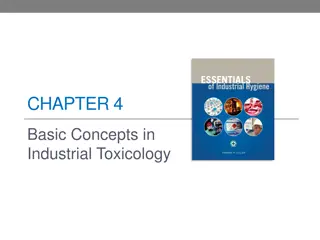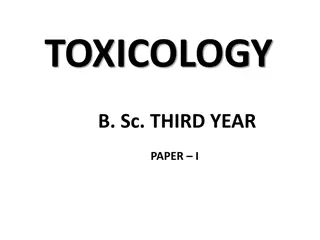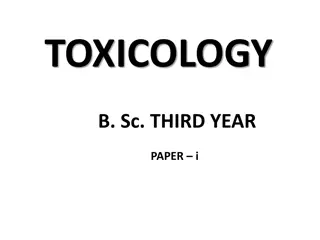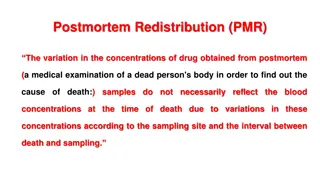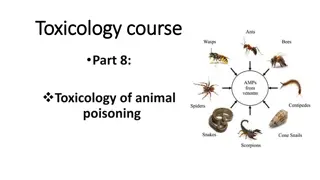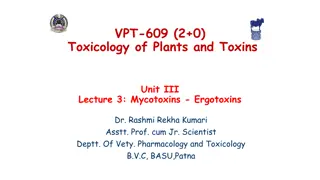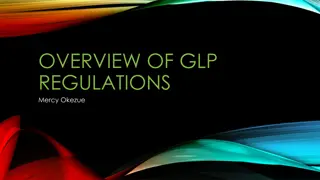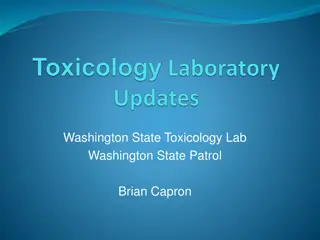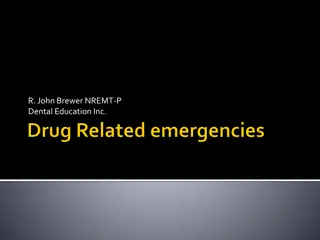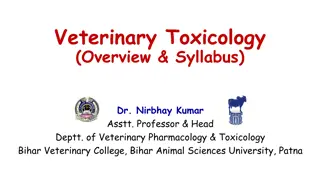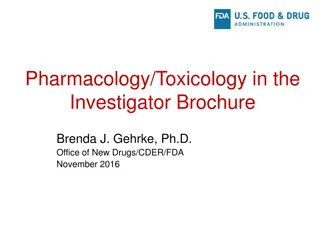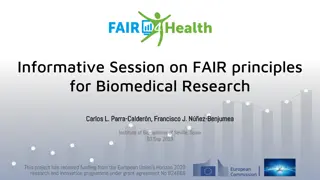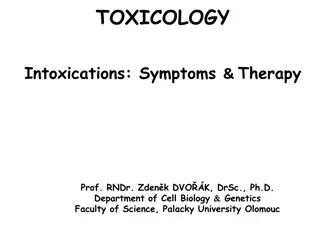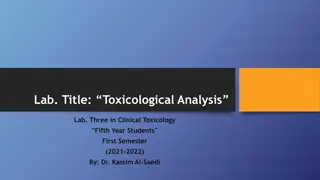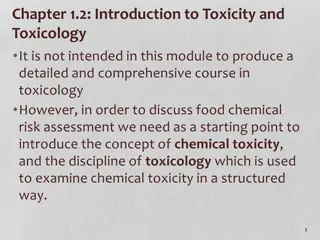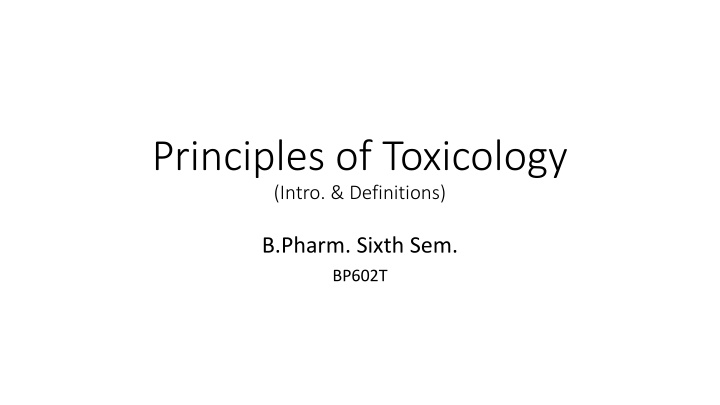
Toxicology: Definitions, Effects, and Terminology
Explore the fundamental principles of toxicology, delving into the study of poisons, adverse health effects, and the characteristics of toxic substances. Learn about toxicity, toxicants, toxins, potency, hazards, and different types of exposure durations, from acute to chronic.
Download Presentation

Please find below an Image/Link to download the presentation.
The content on the website is provided AS IS for your information and personal use only. It may not be sold, licensed, or shared on other websites without obtaining consent from the author. If you encounter any issues during the download, it is possible that the publisher has removed the file from their server.
You are allowed to download the files provided on this website for personal or commercial use, subject to the condition that they are used lawfully. All files are the property of their respective owners.
The content on the website is provided AS IS for your information and personal use only. It may not be sold, licensed, or shared on other websites without obtaining consent from the author.
E N D
Presentation Transcript
Principles of Toxicology (Intro. & Definitions) B.Pharm. Sixth Sem. BP602T
Introduction Drugs when introduced in the body, in addition to their pharmacological action, they also produces toxic effects. No drug is free from toxic effects. One drug may produce minor toxic effect whereas the other may cause serious toxic effects The literal meaning of the term toxicology is "the study of poisons". The root word toxic entered the English language from the Latin word toxicus (which meant poisonous), itself derived from toxik n, an ancient Greek term for poisons into which arrows were dipped. As toxicology has evolved into a modern science it has expanded to cover all forms of adverse health effects that any substance might produce. The following definitions are used to understand the toxicology.
DEFINITIONS / TERMINOLOGY TOXICOLOGY: It is the science that deals with the study of the adverse effects (toxicities) that chemicals or physical agents may produce in living organisms under specific conditions of exposure. Toxicology is the science that experimentally investigates the occurrence, nature, incidence, mechanism, and risk factors for the toxicities (adverse effects) of toxic substances. TOXIC: a subestance having the characteristic of being able to produce an undesirable or adverse health effect at some dose. TOXICITY: any toxic (adverse) effect that a chemical or physical agent might be able to produce within a living organism. TOXICANT: any substance that causes a harmful (or adverse) effect when come in contact with a living organism at a sufficiently high concentration. TOXIN: any toxicant produced by an organism (floral or faunal, including bacteria), that is, naturally produced. An example would be the pyrethrins, which are natural pesticides produced by pyrethrum flowers, on that basis man-made insecticide class pyrethroids is developed
POTENCY: a measure of the ability of a chemical to express its toxicity per unit of dose or dosage. The more potent a chemical, the less dosage needed to induce the toxicity it produces. In general terms, the less potent a chemical is, the safer it is because the probability of achieving a dose sufficient to induce toxicity via a particular route of exposure is lessened. Similarly, more potent chemicals tend to be more dangerous because it takes a smaller dose from an exposure to be able to induced toxicity. HAZARD: the qualitative nature of the adverse or undesirable effect (i.e., the type of adverse effect or toxicity the chemical produces) resulting from exposure to a particular toxicant or physical agent. Exposure: a measure of the opportunity for contact with a chemical in one's environment. The presence of a chemical in an environmental media of contact
Acute exposure: exposure that occurs only for a brief period of time (generally <24 h). Often it is considered to be a single exposure. Subacute exposure: the exposure duration is greater, for example, from several days to 1 month in animal studies. Subchronic exposure: exposures repeated or spread over an intermediate time range. This time range is generally considered to be 1-3 months. Chronic exposure: either repeated or continuous exposures over a long period of time, between 90 days to a lifetime. In occupational settings it is generally considered to be for a number of years or more.





